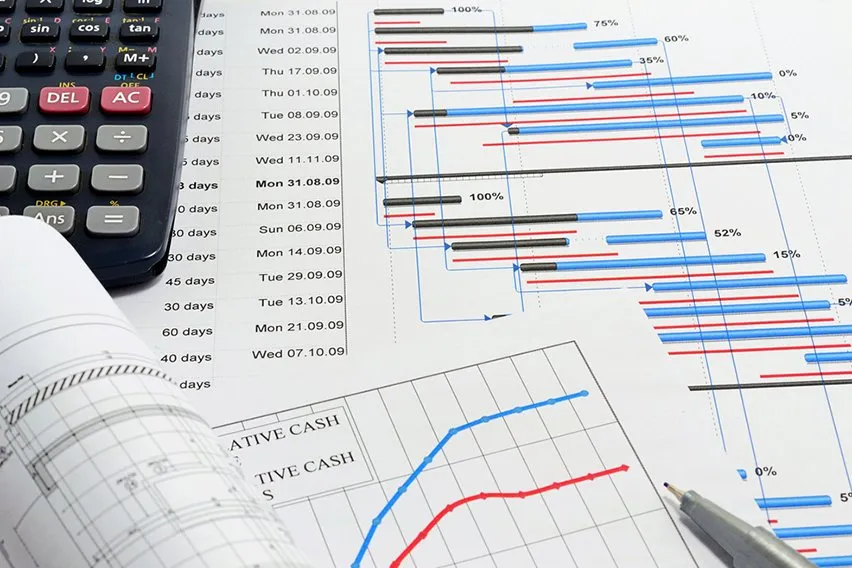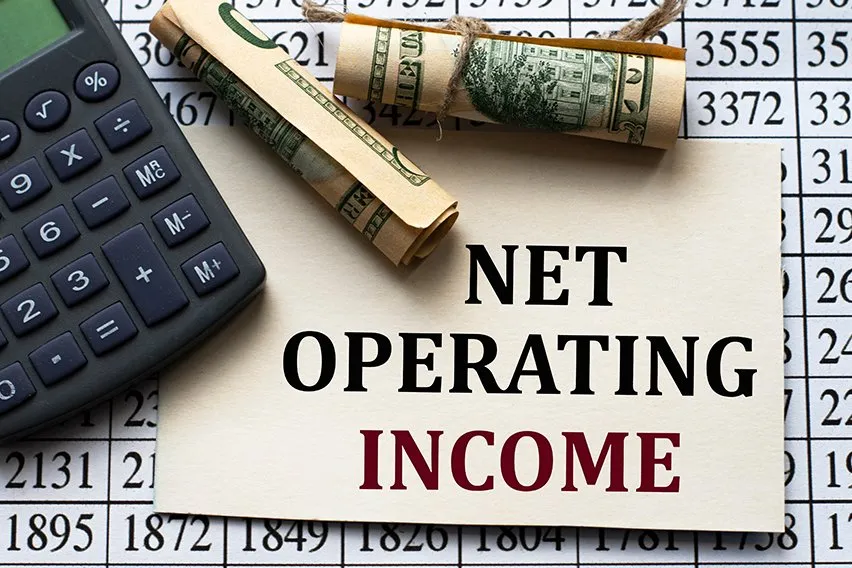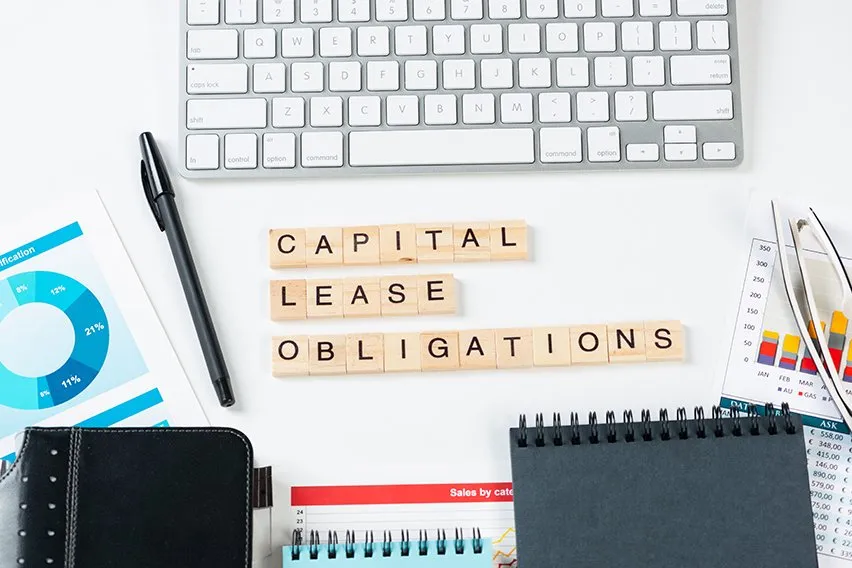How to Calculate Cash Flow

Most business owners will tell you that cash flow is the most important part of business finances. It tells you where your money is coming from, and where your money is going. As such, knowing how to calculate cash flow is crucial. Properly calculated cash flow will give you an accurate picture of your business’s financial health.
Are you looking to learn how to calculate cash flow for your business? Look no further. We’re going over how to calculate three different cash flows in our article. Keep reading to find out more!
Here’s What We’ll Cover:
Benefits of Calculating Cash Flow
What Is Cash Flow?
Simply put, cash flow is how money moves in your business. Generally speaking, you’ll need to understand where your money is coming from, and how you’re spending your money. These can also be called cash outflows and cash inflows. Cash outflows consist of all your business’s expenses, while cash inflows account for all of your income.
If your cash outflows outweigh your inflows, then the result is a negative cash flow. In the same respect, high cash inflows and low outflows result in a positive cash flow.

Why Is Cash Flow Important?
Cash flow is an integral part of business. Using the cash flow statement, you can determine the overall financial health of your business. It is a good measure of profitability and strength for a company. Over time, by looking at the cash flow statement and other financial statements, you can also predict the outlook of a company. As such, cash flow calculations are important to understand.
Three Cash Flow Formulas
When you’re looking at your business’s cash flow, you want to be able to do so from different angles. As such, there are three important cash flow formulas that you can use. Depending on what kind of cash flow you want to look at, you can choose the most appropriate formula. Check them out below.
Free Cash Flow Formula
One of the most common formulas for determining cash flow has to deal with free cash flow, or FCF. A traditional cash flow statement shows you how much money your business has at a specific period of time. This may not be the best way to look at your business’s cash, however.
The FCF formula helps you determine what money you have available. This is also called free cash, meaning that it isn’t tied up in anything. If you’re unsure about how much money your business has to spend at any given time, you can use the FCF formula to find out. It helps to prevent overspending.
Let’s take a look at the FCF formula:
Free Cash Flow = Net Income + Depreciation or Amortization – Change in Working Capital – Capital Expenditure
When reviewing this formula, the following definition apply to the terms listed above:
- Net Income: Total income after business expenses have been deducted. To calculate net income, subtract all business expenses from your total revenue or sales. You can also find this figure on your business’s income statement.
- Depreciation or Amortization: The value lost on your business’s assets. This can apply to many different things, like equipment or investments. You can find these figures on the income statement, as well.
- Working Capital: The difference between your assets and liabilities. This represents the capital used in business operations. Specifically, it refers to day-to-day operations. You can find this on the balance sheet.
- Capital Expenditure: This is the money that your business spends on fixed assets. Fixed assets may refer to land, equipment, or real estate. This is on the standard statement of cash flows.
When you find this information, it’s easy to plug it into the formula. Once you’ve found the figures, you can calculate how much money you have to reinvest into your business!
Cash Flow Forecast Formula
When you want to estimate how much money you’ll have over a period of time, you’ll need to use a forecast formula. This lets you determine how much money you’ll have on hand in the future. Cash flow is important to all core operations for a business. If you can’t anticipate how much money you’ll have, then you won’t be able to plan accordingly.
This is one of the easiest cash flow formulas to use. Unlike the FCF formula, you don’t need to have any complex figures or definitions handy. It’s purely speculative, and relies on numbers you should always have on hand. Here’s what it looks like:
Cash Flow Forecast = Beginning Cash + Projected Inflows – Projected Outflows = Ending Cash
Simple enough, right? Beginning cash is the money you have on hand at the moment you start the calculation. Projected inflows are what you predict your business will make, and outflows are what you plan to spend. This formula isn’t perfect, but if you understand your business then it’s easy to predict how much money you’ll have.
In most cases, businesses like to forecast cash flow over 30 day or 90 day periods. This lets them stay ahead. Consider using this to prevent any kind of cash flow issues in your business. Using forecasting for your financial decisions can prevent business failure. Issues in cash flow are the number one business killer, after all.
Operating Cash Flow Formula
Free cash flow is used for understanding how much free money you have. Forecasting is used for predicting how much cash flow you’ll have. In between those two lies the operating cash flow formula. If you want to understand the typical cash flow for your business, you’ll want to use the operating cash flow formula. This takes into account any irregular spending or issues. The other two don’t.
The operating cash flow of a business is used when seeking investment from lenders or banks. It gives them an idea of how your money is spent on any given day. The same will be said when you start working with any financial professionals. It gives them the best picture of business activities.
In addition to some of the terms listed above, you’ll need to know one more for this formula:
- Operating Income: The money your business makes from regular operating activities. To find operating income, you’ll subtract operating expenses from total revenue. This information can be found on the income statement.
With that added to the glossary, let’s take a look at the formula.
Operating Cash Flow = Operating Income + Depreciation – Taxes + Changes in Working Capital
While operating income is used for many things, it’s standard to look at it over a specific period of time. This can be an accounting period, a quarter, or an entire year.

Benefits of Calculating Cash Flow
When you’re looking at your business’s financials, you may be wondering what the advantages are when it comes to cash flow. Truthfully, cash flow is the most important part of any business, but this is especially true for small businesses.
Cash Flow Keeps Things Running
The reason that most small businesses fail is due to cash flow issues. The accounting side of business isn’t the easiest thing to get the hang of. A great accounting software can help, though. When you start doing the accounting for your small business, you start having more control over your cash flow. You can predict the ebb and flow of finances, and you can increase it when you need to.
Cash Flow Calculations Prevent Overspending
Whenever your small business needs to make a big purchase, a quick cash flow formula can help you make the right decision. Knowing if your business can commit to a purchase makes a difference in operating activities.
Cash Flow Attracts Investors
The goal of most small businesses is to expand. Most of the time, that’s not possible without some financial assistance. If you’re looking for financial backing, proving that you have a positive cash flow can help. The only way you can do that is by having an understanding of your cash flow formulas.
Key Takeaways
Cash flow is an integral part of business. However, not all cash flow formulas are the same. Depending on what you need to know, one of the three formulas listed here may be able to help. If you’re looking for more accounting information, be sure to visit our resource hub! We’re here to help you and your small business with all things accounting. Check it out today!
RELATED ARTICLES

 How to Create a Cash Flow Projection
How to Create a Cash Flow Projection What Is Net Revenue? Definition & Formula
What Is Net Revenue? Definition & Formula Net Profit Margin: Definition, Example & Calculation
Net Profit Margin: Definition, Example & Calculation Operating Income: What Is It?
Operating Income: What Is It? Capital Lease Vs Operating Lease: What’s the Difference?
Capital Lease Vs Operating Lease: What’s the Difference? What Is Payroll Remittance & Deduction?
What Is Payroll Remittance & Deduction?